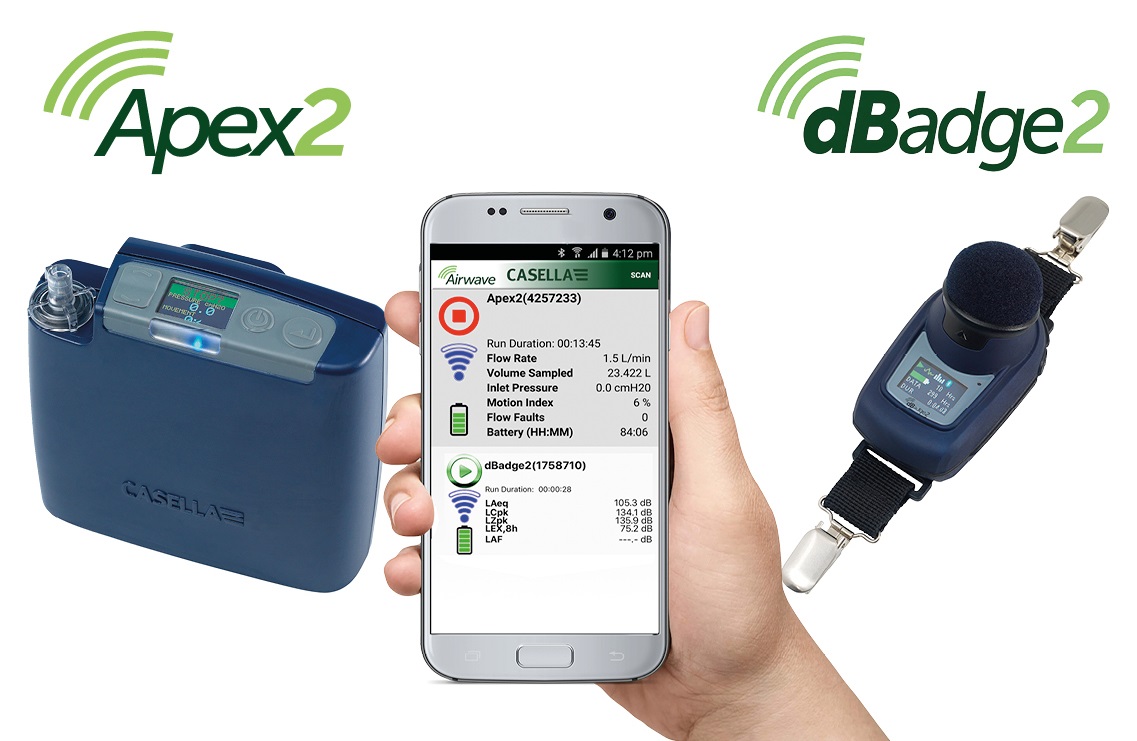Casella UK
Wolseley Rd, Kempston,Bedford MK42 7JY
+44(0)1234844100
info@casellasolutions.com

In the latest in our blog series first featured on SHP Online, Casella Product Manager Tim Turney looks at the way the technology in our everyday lives has assisted the health and safety profession, and what it might mean for the future of occupational health.
The universal adoption of smartphones and tablets has changed our daily routines irrevocably. Devices have become an extension of the human mind, changing the way we communicate, obtain information, and document the world around us.
Employers are increasingly utilising technology for deeper insights into employee exposure levels from various substances in the workplace (including noise and dust), changing processes when limits are above regulatory levels. As the constant stream of data and different types of technology available continues to grow, employers can look forward to a future where employee exposure data will become even more specific.
Noise Action Week within the UK was celebrated between 22nd-27th May, marking the effort to reduce the cost of noise to our health and overall quality of life. Technology is the key to transforming such practices in the workplace and could be a major tool in saving thousands of lives, reducing the likelihood of incidents occurring.
Now is the perfect time for employers to evaluate the methods they are using to monitor workplace exposures and to embrace the technological megatrend.
Why Monitor?
Monitoring in the workplace is a key part of health and safety strategies, especially in a climate where there are almost 13,000 deaths each year from work-related lung diseases that could be the direct result of dust exposure.
By using technology and monitoring tools, employers can assess the working environment in real-time and each member of the team is involved in this process. Personal monitoring pumps are an example of such practises and the data these collate help employers to implement new processes. These solutions can measure noise, dust, vibration and wind-speed, and the data can be transmitted wirelessly to a central hub using Bluetooth connectivity. With this, employers can monitor exposure levels at multiple sites remotely- keeping a track of the data all the time.
Smart Solutions
In addition to conventional monitoring equipment, cameras are also an effective method to document workplace conditions, practices and hazards, collating evidence that can be emailed and digitally recorded for future reference. Air pollution can be measured using cameras, as users can orient their device toward the horizon at sunset or sunrise to use ‘haziness’ as an indicator of pollution levels.
Safety and health professionals are starting to recognise the benefits of embracing technology. The director of the National Institute of Occupational Safety and Health in the United States, Dr. John Howard says, “the future of direct-reading devices and smartphone applications may help to revolutionise the practice of industrial hygiene and safety evaluations.”
Bright Future
Specific monitoring instruments remain crucial in the overall health and safety process to ensure that employers are fully aware of the hazards their workforces are exposed too.
New technology should compliment existing practices and provide greater levels of information then previously available.
The more employers are aware of emerging trends and the latest tools available to monitor exposures, the easier it will be for them to integrate them into their daily analysis routine. As the world becomes dominated by technological advances, employers must keep up with these changes in order to ensure their workforces see the benefits.
This blog was first published on SHP Online and is part of a series from Casella covering different aspects of health and safety in the modern workplace.